Nubia
Q135028Nubia: name of the country south of Egypt, more or less identical to modern Sudan. In ancient times, there were three Nubian kingdoms, which are named after their capitals: Kerma, Napata, and Meroe. Other names are Kush and Ethiopia.

Nubia, the country along the Middle Nile, was a very complex region: it was ethnically diverse, people spoke different languages (some of which are still waiting to be deciphered), and there were various ways of life. It was not a real unity, although the Egyptians called all land south of the First Cataract Ta-seti. In fact, three zones can be distinguished:
- between the First and Second Cataracts was Lower Nubia with towns like Abu Simbel and Buhen (more or less in modern Egypt);
- between the Second and Third Cataracts was Middle Nubia, with the Sai island;
- Upper Nubia was the land between the Third and Sixth Cataracts.

The last-mentioned part is the region of the three great Nubian civilizations: Kerma (Early and Middle Bronze Age), Napata (Iron Age), and Meroe (until Late Antiquity). It is a savanna, where summer rains allow agriculture. This country also produced copper and gold. The two first regions, on the other hand, were essentially a very narrow strip of fertile land along the Nile, never densely populated.
Prehistory
In Lower Nubia, archaeologists distinguish several successive stages of civilization, the oldest of which they have labeled the A Group and can be dated to centuries after 3800 BCE and is more or less contemporary to the Naqada culture of Predynastic Egypt. While early states emerged in Upper Egypt, Lower Egypt witnessed the rise of chiefdoms, which exported ebony and ivory.
At the beginning of the third millennium, Egypt was united and became one kingdom. This would have created greater demand for the products of Nubia and increased prosperity, and this happened indeed. However, there was no room for Nubian traders: the Egyptians started to directly exploit the natural resources of what they called "the land of twelve leagues" (an Egyptian league or iteru being 10½ km). An example is the copper factory at Buhen - and the people of the A Group evacuated Lower Nubia. However, there is also evidence for Nubian soldiers joining the Egyptian army.
Kerma (c.2500-c.1500)
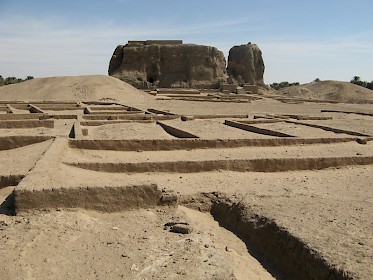
In the course of the sixth dynasty (c.2350-2200), Egypt lost control of Lower Nubia and the valley was resettled by people of the C Group, which had its roots further upstream. A real kingdom, stretching more than 1000 kilometers along the river, came into being, with Kerma as its capital, just south of the Third Cataract. Originally, this had been a town with huts made of timber and earth, storage pits, several more monumental buildings, and a wall. After c.2500, a new and far more monumental town was founded, closer to the Nile. Dukki Gel, as it is called today, must have been a large with city with some 10,000 inhabitants. At the cemetery, where the elite was buried, between 20,000 and 30,000 tombs have been identified.
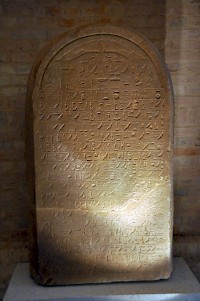
Again, trade was important: the gold and copper mines were still important. Kerma was at the crossroads of Egypt and Central Africa, the Red Sea and the southern Sahara. This made the kingdom a logical target when Egypt, after the First Intermediate Period, was reunited. Starting with pharaoh Senusret I (c.1950 BCE), the kings of the Twelfth Dynasty invaded Lower Nubia again. Their power lasted for about two centuries, but during the Thirteenth Dynasty (c.1780-c.1660), Egypt lost control of this area again.
The Middle Kingdom of Egypt and Kerma had their border near Semna, close to the Second Cataract. Egypt never attempted to occupy Upper Nubia. In this age, a new name was introduced for Egypt's southern neighbor: it was called Kush, a name that would remain in use and is also found in the Bible.
In Egypt, this was the beginning of the Second Intermediate Period. In Upper Egypt, the Seventeenth Dynasty succeeded the Thirteenth Dynasty, while Lower Egypt was ruled by the Fourteenth, Fifteenth ("Hyksos"), and Sixteenth Dynasties. The kings of Kerma exchanged diplomats with these northern kings. After all, they had a common enemy in Upper Egypt.
 Kerma, Necklace |
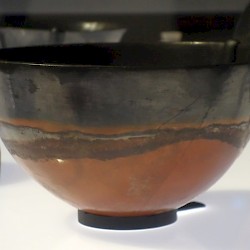 Kerma, Pottery |
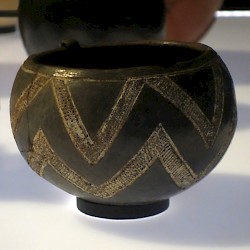 Kerma, Pottery |
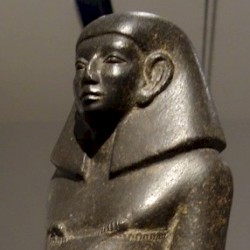 Kerma, Statue of Thuthmose III |
Egyptian Intermezzo
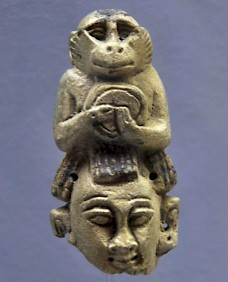
However, this also meant that when Ahmose, the first king of the Eighteenth Dynasty, reunited Egypt and fought a war against the Hyksos kingdom, an attack on its southern ally was a logical next step. Indeed, Ahmose invaded Lower Nubia and proceeded to the Second Cataract, to Semna. His successors even reached the Fourth Cataract, which meant that they controlled the holy mountain of Nubia, the Gebel Barkal near Napata. Here Thutmose III (r.1479-1425) created a residence for the viceroy, who had the title of "king's son of Kush".
Although rebellions are mentioned, the three parts of Nubia now were a province of the New Kingdom. Now it was Egypt that controlled the southern trade roads. The Nubian way of life was Egyptianized, Nubia's culture started to resemble pharaonic culture: the kings were buried in pyramids, hieroglyphic writing was introduced, several Egyptian gods were venerated. Still, there were Nubian traditions that remained the same.
Egyptian rule lasted from the sixteenth century BCE until the eleventh century. After the reign of Ramesses XI, the last king of the Twentieth Dynasty, Nubia became independent again. Its new capital was Napata.